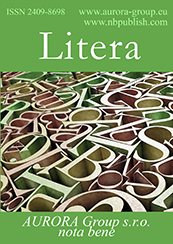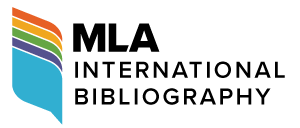Literary criticism
Reference:
Lamzina, A.V., Kikhnei, L.G. (2021). The “echo” of Edgar Poe in Anna Akhmatova’s “Poem without a Hero” and poems later period . Litera, 1, 1–14. https://doi.org/10.25136/2409-8698.2021.1.34645
Abstract:
The subject of this research is the hidden allusions to the novels of Edgar Poe in Anna Akhmatova’s “Poem without a Hero” and poems later period. The research material contains the framework text of the “Poem without a Hero” – the set of epigraphs to different parts of the poem, authorial commentaries, history of used and discarded epigraphs at various stages of revision of the poem, text of the “Poem without a Hero”, as well as the author's “Prose about the Poem” and a number of poems created during the work on the “Poem without a Hero” and afterwards. A. Akhmatova was interested in the works of Edgar Poe, and researched the references to Edgar Poe in the works of N. S. Gumilyov. The article employs comprehensive methodology, such as comparative-historical and biographical approaches, as well as intertextual and hermeneutic methods for determination of literary allusions and interpretation of meanings hidden by the author. The main conclusion lies in revelation of the profoundly concealed connection of the “Poem without a Hero” with the range of narratives of Edgar Poe, united by the cross-cutting motif of being buried alive and coming back from the dead: “The Black Cat”, “The Fall of the House of Usher”, “Morella”, “Ligeia”, “Berenice”, “The Oval Portrait”. This gives a new perspective on the literary characters that one after another appeared to the lyrical heroine in plot of the poem; and explains the fragment of one of the most mysterious works in Russian literature of the XX century, and some other poems of Anna Akhmatova.
Keywords:
cross-cutting motives, allusion, reception, reminiscence, poem, Edgar Poe, Akhmatova, comments, epigraph, frame
Question at hand
Reference:
Nguyen , T., Perfilieva , N.V. (2021). Conceptual structural metaphors in economic discourse in the titles of Vietnamese and Russian newspapers. Litera, 1, 15–26. https://doi.org/10.25136/2409-8698.2021.1.34820
Abstract:
The goal of this research is the analysis of structural metaphors in economic discourse in the titles of Vietnamese and Russian newspapers, as well as determination of the principal metaphoric models in the titles of Vietnamese and Russian media. The article employs the material from the original sources. The main research methods include component analysis, comparative analysis, and method of continuous sampling. As a result, the author highlights the peculiarities of conceptual structural metaphor and principal metaphorical models in the titles of Vietnamese and Russian economic texts: economics is the battlefield; economics is the weather; economics is the health condition; economics is the sports. Description is given to the peculiarities of conceptual structural metaphors in the titles of the leading Vietnamese and Russian economic newspapers. The acquired materials can be applied in translation practice, as well as textbooks on the stylistics of Vietnamese and Russian languages. The conducted research is also valuable for comparing linguocultures of the two languages. The conclusion is made that the conceptual structural metaphors are actively used in the titles of Vietnamese and Russian publicistic articles of economic nature.
Keywords:
economic discourse, Russian language, Vietnamese language, metaphorical model, conceptual metaphor, structural metaphor, headline, metaphor, comparative analysis, translation
Question at hand
Reference:
Lyu, V. (2021). Evolution of language interpretation technique in China. Litera, 1, 27–37. https://doi.org/10.25136/2409-8698.2021.1.34762
Abstract:
This article traces the evolution of teaching language interpretation in China. The author analyzes the dynamic effect of Soviet and Western cultures upon Chinese culture. The conclusion is formulated that the evolution of language interpretation technique in China is closely related to the processes taking place in the world. The article focuses on the four stages of evolution in teaching language interpretation: origination (late 1970’s – late 1980s), early development (1990s), new period (first decade of the XXI century), and period of diversified development (second decade of the XXI century). The article reveals similar and mutually infiltrating techniques of language interpretation in the three cultural geographical regions: Russia, China, and the West. An attempt is made to forecast further development of language interpretation technique in China. The evolution of language interpretation technique in China would certainly be affected by the era of digitalization, which promotes the advancement of research on machine translation, artificial intelligence, and big data. The contemporary era of big data and new technologies has considerable impact upon the technique of language interpretation; the interpreters should learn to search for information necessary for their profession.
Keywords:
the Soviet theory of translation, globalization, new technologies, the digital age, three periods of evolution, cultural geographical regions, interpenetrating parts, foreign cultures, interpreting training, the interpretive theory
Question at hand
Reference:
Alsalibi, R.M. (2021). Communication in St. Petersburg social networks as a means of adaptation of ethno-cultural communities. Litera, 1, 38–55. https://doi.org/10.25136/2409-8698.2021.1.34869
Abstract:
The subject of the study is the specifics, forms and functions of interaction in groups in social networks between representatives of ethnic communities. The aim of the work is to identify the role of social networks in the adaptation of ethno-cultural communities of St. Petersburg. The survey method was used in the study, which is one of the ways to obtain information about a person's cognitive, emotional and behavioral state. The survey was conducted by distributing a questionnaire among representatives of ethnic groups. Systematic scientific observation of social media pages, topics raised in groups, reading and analyzing comments were also used. The novelty of the research lies in the established nature, trends and prospects for the development of intercultural communications as a channel of ethno-cultural interaction. The main conclusions of this study, affecting users from various ethnic communities who lack a sufficient level of organization of the activities of various groups within social networks, showed that this leads to a loss of a sense of security, an increase in prejudice and escalation of interethnic conflicts, as well as the transition of ethnic groups in social networks to closed pages with private access, contributing to intra-group isolation, including hindering adaptation in the host society. To stabilize the situation, it is necessary to significantly improve the quality of content posted on the territory of social networks and improve the quality level of their organization.
Keywords:
social network, ethno-cultural communities, open page, closed page, national identity, ethnic identity, cross-cultural communications, ethnic group, cultural diversity, adaptation
Linguistics
Reference:
Dmitrieva, E.I., Grubin, I.V. (2021). An overview of approaches towards studying railway terminology as an element of language for specific purposes (on the material of English language). Litera, 1, 56–63. https://doi.org/10.25136/2409-8698.2021.1.34888
Abstract:
The subject of this research is the approaches towards studying railway terminology as the language for specific purposes. Transport and namely railway terminology holds an important place in the terminological system of English language. The author explores the basic interpretations of the concept of “language for specific purposes”, as well as such approaches towards studying railway terminology of English language as semantic, structural and etymological. Semantic approach consists in classification of terms by semantic groups. Structural approach analyzes the number and nature of components that comprise terminological units in this area of LSP. Etymological approach reviews the origin and evolution of the meaning of terminological units. The scientific novelty consists in comprehensive description of the approaches towards studying language for specific purposes on the materials of professional field “railway transport”. Research methodology includes the analysis of scientific literature, analysis of dictionary definitions, comparative method, and diachronic analysis. The conclusion was made that the same approaches are applicable to the analysis of railway terminology and to the analysis of language for specific purposes of any other professional sphere. At the same time, systematicity and hierarchical pattern of the acquired classifications indicated a high level of formedness and systematization of terminology under review.
Keywords:
etymological approach, structural approach, semantic approach, research, railway transport, LSP, terminology, review, term, vocabulary
Question at hand
Reference:
Bozieva, N.B. (2021). Poetry of Boris Kagermazov . Litera, 1, 64–73. https://doi.org/10.25136/2409-8698.2021.1.34521
Abstract:
The subject of this article is the analysis of poetry of Boris Kagermazov. The object of this research is the genre, plot, composition, and thematic peculiarities the epic works of Boris Kagermazov. The goal of this article is to reveal the specific features of the poems, their compositional structure, novelties s in poetics, and role of this genre in the works of Boris Kagermazov. Detailed examination is conducted on peculiarities of the poems “Echo of the War”, “Grief and Anger”, “Harmonist”. Attention is given to the analysis of poetic theme and problematic of the poems, as well as to their composition and artistic skill of B. Kagermazov. The relevance of the selected topic is defined by the crucial role of B. Kagermazov in evolution of the genre of poem in the Kabardian-Circassian literature of the XX century, the depth of artistic conceptualization of the historical process, and embrace of the system of philosophical, spiritual- ethical, and aesthetic values of his ethnic group. The acquired results may serve as the theoretical foundation in the further examination of the works of B. Kagermazov and studying the Adyghe poetry, namely lyrical and lyrical-epic works; their practical application can be found in specialized courses, research works of the pedagogues, postgraduates and students. The conclusion is made on the novelties introduced by the poet in creation of original modifications of the poem, which is reflected in the diffusion of genres, simultaneous use of certain elements of lyrics, epic, and drama. The poet's artistic pursuits made significant contribution to enrichment of the national literature.
Keywords:
poetics, genre, epic poetry, lyric poems, poem, poetry, Kabardian literature, psychologism, Boris Kagermazov, lyricism
Question at hand
Reference:
Milyukova, A. (2021). Narrative analysis of media discourse of a special event (on the example of Robert Rozhdestvensky Altai Regional Literary Festival) . Litera, 1, 74–83. https://doi.org/10.25136/2409-8698.2021.1.34780
Abstract:
Leaning on the narrative analysis of media materials, this articled examines the peculiarities of the narrative of regional literary festival of Robert Rozhdestvensky. Research methodology employs narrative analysis, which being a variety of qualitative content analysis, implies characteristics of the following textual elements: narrator: hero/narrator / author; characters, their types; events (plot functions); type of narrative strategy; time; space; intertext, precedent texts, metanarrative; dichotomies, presuppositions, ideologemes. The object of this analysis is media article dedicated to the regional literary festival of Robert Rozhdestvensky, material publications (345 units) cover the period from June 8, 2007 to December 31, 2019. Four types of narrative elements of discourse of a special event are characterized: personal experience of familiarization with R. Rozhdestvensky’s poetry; national narrative of the Great Patriotic War; history of emergence of his poems in the context of other belongings that were transferred to the museum. Narrative elements within the discourse structure are brief and curtailed. The article explores narrative potential of a social conflict in generating the narrative of a special event in the media. It is demonstrated that the narrative is composed by stories associated with Robert Rozhdestvensky, while the subjects of media discourse are the prominent participants, cultural workers, and narrators. The conclusion is drawn that the narrative and mythological components within the structure of media discourse are attributed to different objectives.
Keywords:
Robert Rozhdestvensky, cultural politics, storytelling, dichotomy, narrative strategy, narrative analysis, narrative, discourse, special event, literary festival
Literary criticism
Reference:
Darbasova, S.D., Egorova, S.I. (2021). The works of A. E. Kulakovsky in the assessment of Yakut literary criticism of the 1920s. Litera, 1, 84–95. https://doi.org/10.25136/2409-8698.2021.1.34766
Abstract:
This research examines critical reviews of 1920s dedicated to the analysis of literary works of the founder of Yakut literature A. E. Kulakovsky on the basis of historical-culturological approach. Previously undiscovered materials of the periodical press of that time alongside systematization of the analyzed material of literary criticism reveals the perception of literary works of the poet by the critics and writers of the incipient Yakut literature. An attempt the critical analysis of the material is conducted in the context of the impact of epoch, mentality of Sakha people, and prevalent ideology upon the criticism of literary works. The opinions in the works of critics and writers are dictated by the cultural-historical and sociopolitical situation in the country, when young Yakut literary criticism embarks on a contradictory path of transition from the field of literary studies to political struggle. The relevance of the topic is defined by insufficiency of research dedicated to the assessment of criticism of the period of establishment of Yakut literature, namely the works of A. E. Kulakovsky. The article presents the previously unpublished critical reviews, as well as the articles that were not included in the biobibliographic index of A. E. Kulakovsky. Research in this field complement the materials on the history of development of Yakut literary criticism in the context of studying artistic and scientific heritage of A. E. Kulakovsky.
Keywords:
nigilistic approach, bourgeois nationaism, formation of literature, RAPP, pre-revolutionary writers, Yakun critical literari, critikal article, the founder of, periodicals, journal
Linguistics
Reference:
Savina, E. (2021). Legal lexicon in the second volume of Marcel Proust's novel “In Search of Lost Time” (“À la recherche du temps perdu”) “In the Shade of Young Girls in Flowers” (“À l'ombre des jeunes filles en fleurs”): linguostylistic analysis . Litera, 1, 96–109. https://doi.org/10.25136/2409-8698.2021.1.32086
Abstract:
This article reviews the stylistic functionality of legal lexicon in the second volume of M. Proust's novel “In Search of Lost Time”. By means of general and field specific (civil, constitutional, international, criminal and financial) legal lexicon, the author describes various spheres of life that are far from the jurisprudence – human sensory systems, visual arts, social graces of the bourgeoisie and aristocracy, as well as friendship and romantic relationship of Marcel and Albertine. The article employs the methods of lexical, semantic and linguostylistic analysis. The novelty of this research consists in the analysis of functionality of specific lexicon in the literary text. The author highlights certain types of social relations, which are described via comparison with legal situations, as well as related metaphors and comparisons from other areas of life.
Keywords:
language and style, legal terms, legal terminology, legal vocabulary, stylistic figures, stylistics, lexicology, comparison, metaphor, Marcel Proust
Linguistics
Reference:
Serbin, V.A. (2021). Borrowings in military terminology of the modern Vietnamese language . Litera, 1, 110–124. https://doi.org/10.25136/2409-8698.2021.1.34698
Abstract:
This article is dedicated to the analysis of techniques of external enrichment of terminology of the Vietnamese language. An attempt is made to examine the phenomenon of borrowing of foreign words in military terminology of the modern Vietnamese language. The author explores the factors of borrowing, carries out classification by origin and source of borrowing. The relevance of this work is defined by the need to systematize knowledge on the foreign borrowings in military terminology of Vietnamese language at the current stage of its development, rapid advancement of military science, new technologies, integration of Vietnam into the global community, and, thus, the emergence of vast foreign lexicon from Western languages, including in terminology. The novelty consists in systematization, generalization, and analysis of the methods of foreign borrowing in Vietnamese language and sectoral terminologies, particularly in military terminology. The conclusion is made that military terminology of Vietnamese language contains 80% of borrowings from foreign languages. According to the source of borrowing, foreign words are divided into two groups: of Sino origin (Hán Việt), and of Indo-European origin. The basis of borrowings is comprised of the terms of Hán Việt origin, which in have assimilated and currently are fully functional units of Vietnamese language. At the present stage, most of the words are borrowed from the English language; the majority of loanwords from European languages in Vietnamese language are attributes to semantic (word-forming and semantic calques). This method of borrowing often makes the terms too complex, difficult to remember and use. Borrowings from European languages, which currently infiltrate into Vietnamese language without changing their graphic form, are pronounced in accordance with the phonetic norms of Vietnamese language.
Keywords:
reasons for loan words, terminology, Vietnamese, military terminology, loan words, linguistic borrowing, transcription, loan translation, lexicology, term formation
Linguistics
Reference:
Shakhnazaryan, V.M., Kazakova, I.E. (2021). Translation peculiarities of national-cultural lexicon (on the example of territorial dialect of Spanish language in the Mexican state of Quintana Roo and New Zealand national version of English language) . Litera, 1, 125–133. https://doi.org/10.25136/2409-8698.2021.1.34870
Abstract:
The goal of this article is to determine the peculiarities of translation of national-cultural lexicon based on the analysis of Maisms (Mexican national lexical units of Spanish language in the state of Quintana Roo) and Maorisms (New Zealand national lexical units of English language). The article substantiates the need for knowing accuracies and specifics of formation and development of lexical units of national-cultural nature. Lexical units are examined in their historical evolution, as well as in modern synchronous context. Semantic meanings of the aforementioned terms are viewed through the prism of translation paradigm. The research material contains the survey of informants – residents of the indicated regions, as well as unilingual and bilingual academic dictionaries. The scientific novelty consists in comprehensive examination of specific characteristics of translation of the national-cultural lexicon on the example of two unrelated lexical national-cultural groups, as well as in analysis of the relevant lexical changes of linguistic units at the current stage of development of New Zealand version of English language and territorial dialect of Spanish language in the Mexican state of Quintana Roo. It is proven that lack of knowledgeability of translators in the field of lexical aspects of the national-cultural language leads to misperception and subsequent inaccurate interpretation of speech patterns, oral and written texts.
Keywords:
Spanish of Mexico, language variability, national and cultural features of the language, Maori, Maya, translation and translation studies, Quintana Roo state, English of New Zealand, national language variation, national and cultural vocabulary
Linguistics
Reference:
Pavlova, A.D., Guruleva, T.L. (2021). Peculiarities of genesis of the classical phrase particles of Chinese language . Litera, 1, 134–143. https://doi.org/10.25136/2409-8698.2021.1.34877
Abstract:
This article is dedicated to the evolution of phrase particles in Chinese language. The goal consists in examination of genesis of the classical phrase particles of Chinese language and their development patterns. The article also describes the origins of phrase particles, which were established as a result of analysis of the genesis. The relevance of this research is substantiated by the need for diachronic analysis of the particles in order to understand the essence and peculiarities of the functionality of modern particles. Recent years indicate heightened interest to learning Chinese language. The requirements to the level of formation of the Chinese linguistic personality in the process of teaching Chinese language at schools and universities have also grown significantly. Phrase particles play an important role in the development of communicative competence of the learners of Chinese language. Leaning on the existing theoretical works and written sources, the author analyzes the particles of Putonghua from the III century BC until the eary XX century was performed, as well as reconstructs the process of formation and development of the modern classical phrase particles (啊,吗,吧,呢,了,的). The conclusions are formulated on the origins of classical phrase particles of Chinese language and their development patterns; description is given to the peculiarities of formation of each of the classical phrase particles.
Keywords:
modality, particle etymology, Chinese, discoursec particles, translation, modal particles, sentence-final particle, grammaticalization, function words, lexicalization
Eternal symbols
Reference:
Poltavets, M.A. (2021). The history of creation of libretto to the opera “The Demon” by A. Rubinstein based on the text of eponymous poem of M. Y. Lermontov. Litera, 1, 144–153. https://doi.org/10.25136/2409-8698.2021.1.32097
Abstract:
The subject of this research is the history of creation of libretto to the opera “The Demon” by A. Rubinstein based on the text of eponymous poem of M. Y. Lermontov. The object of this research is the text of libretto written over the period from the end of 1870 to 1871. The article examines the stages of creation of the opera, which involved Y. P. Polonsky, A. N. Maykov, P. A. Viskovatov, and A. G. Rubinstein. The article presents the previously unknown facts of working on the text, and considers the question of possible attribution of the text. The research employs historical-literary and hermeneutical methods, which allow to systematically trace the teamwork of authors on the text of libretto. The conclusion is made that the composer took part in in creation of the text along with the librettist, which is testified in correspondence and memoirs of the contemporaries, namely the reminiscences of P. A. Viskovatov. The question of authorship of the text of libretto remains relevant.
Keywords:
permutations, corrections, score, opera, composer, libretto, Demon, Lermontov, text authorship, clavier
World literature
Reference:
Pavlov, D.I. (2021). The influence of author’s provocation upon interpretation of the fourth chapter of “Finnegans Wake” by James Joyce. Litera, 1, 154–169. https://doi.org/10.25136/2409-8698.2021.1.32592
Abstract:
This article is dedicated to the peculiarities of the last novel of the Irish writer James Joyce “Finnegans Wake”, written in 1939. James Joyce paid deliberate attention to the linguistic arrangement of his work, resulting in the novel becoming difficult to translate, as well as to read and comprehend. Analysis is conducted on the fourth chapter of “Finnegans Wake” for demonstrating a peculiar feature of James Joyce's style of writing. Provocation of the Irish novelist is consists in usage of various puns for confusing the reader. This instigates the reader to seek different meanings that correspond to the writer’s concept throughout the text or a specific fragment. The article employs semantic and structural methods of analysis for interpretation of pun. The research also uses historical- cultural and biographical methods for analyzing the complex instances of interpretation. Field analysis is applied for allocating the acquired results into three zones: nuclear, close, and far peripheries. The main result of this research consists in analysis of the novel in the context of author's provocation. The fancy linguistic arrangement of the literary text should be viewed from the two perspectives: on the one hand, the reader analyzes the language and perceives pun as an intended concealment of the novel’s message; on the other hand, interrelation of the meanings of one pun with forces the reader to ponder on a play of sorts between the author and the reader. It can be unequivocally claimed that the reader is constantly uncertain in their correctness.
Keywords:
postmodernism, modernism, pun, provocation, Finnegans wake, James Joyce, English literature, interpretation, game, novel
World literature
Reference:
Ershova, I. (2021). Compilation of stories “On Both Sides” by Dewi Lestari: belles-lettres as the foundation of literary unity. Litera, 1, 170–183. https://doi.org/10.25136/2409-8698.2021.1.34884
Abstract:
This article examines the modern Indonesian women's prose. The object of this research is novelistics of the prominent Indonesian writer Dewi Lestari and the compilation of stories “On Both Sides” (Rectoverso; 2013). The collection demonstrates the features common to popular women's literature, as well as to meaningful, socially biased women's prose of Indonesia of the XXI century, known as “sastra wangi”. The subject of this analysis is the correlation of characteristics inherent to the two aforementioned phenomena in the stories by Dewi Lestari; while the goal consist in finding the beginning that allows the writer to blend different literary codes. The research is based on descriptive and comparative methods. Neither in Indonesia nor outside it, the women's prose “sastra wangi” has not been considered as a holistic literary phenomenon due to diversity of the discourses applied therein. The scientific novelty and relevance of this study are defined by the attempt to analyze sastra wangi based in on the works of the prominent contemporary Indonesian writer. It is revealed that literary unity of the texts of stories of Dewi Lestari imparts belletristic character on her writing, which allows combining the fields of classic and popular literature. This fact is important for understanding the artistic peculiarities of contemporary Indonesian women's prose sastra wangi as a whole.
Keywords:
chick-lit, mass literature formulas, popular literature, fiction, sastra wangi, Indonesian women’s prose, Indonesian literature, romance novel, short stories, Dewi Lestari
 This work is licensed under a Creative Commons Attribution-NonCommercial 4.0 International License.
This work is licensed under a Creative Commons Attribution-NonCommercial 4.0 International License.
 Eng
Eng













 © 1998 – 2025 Nota Bene. Publishing Technologies. NB-Media Ltd.
© 1998 – 2025 Nota Bene. Publishing Technologies. NB-Media Ltd.




